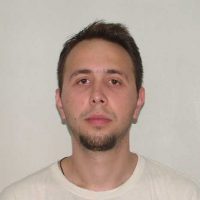Flexible and Energy-Efficient Circuits for Implant-Scale Biomedical Systems

Speaker: Dejan Rozgić
Affiliation: Ph.D. Candidate - UCLA
Abstract: Brain machine interfaces have opportunity to improve our understanding of the brain, restore motor function, and improve the quality of life to patients with neurological conditions. For example, deep-brain stimulation (DBS) can provide symptomatic relief for neurological patients by emitting electrical pulses. Current DBS implants are bulky, have a small number of low precision contacts, and limited stimulation/sensing capabilities. No DBS device has the ability to record neural activity in presence of stimulation artifacts. State-of the-art research reports low-power neuromodulation (NM) units, mostly for animal use, with modest level of integration needing several cm3. For human use, an NM implant should be minimally invasive, with high-precision interface that can record neural activity in presence of stimulation.
In this talk, we are going to present a first full duplex implant-scale NM unit, with extreme miniaturization packing a 32-channel interface in 0.135cm3 while meeting human-grade implant requirements. Improvements in the power conversion efficiency (PCE) of wireless neural stimulating systems in inductively powered implantable devices (IMD) are necessary. Power-management circuits in IMDs should have high PCE to operate with smaller received power, but also should show a high level of integration. Neural stimulating systems also need to have high stimulation efficiency for activating the target tissue with a minimum amount of energy from the power link while ensuring charge-balanced stimulation, providing advantages such as a wide range of stimulus currents, a longer battery life, reconfigurability, etc.
In the second part of this talk, we are going to present an alternative approach for neuronal recording. With recent advances in fluorescent imaging sensors, and their improved speed (>200fps), we are able to simultaneously track and detect a large number of neuron ensembles (100~10 000). However, brain imaging requires processing a large amount of data (1GB/s~10GB/s) and its real-time implementation suffers from long latency, heavy computation and high memory storage because of its frame-level computation. So far, all data processing was done offline. In order to achieve real time neuron detection and spike extraction, we are going to propose hardware architecture of novel imaging algorithms and their usage in understanding of large neural ensembles.
Biography: Dejan Rozgić received the Dipl.Ing. and M.S. degrees in Electrical Engineering from the University of Belgrade, Serbia, in 2009 and 2011, respectively. In 2011, he joined the University of California, Los Angeles where he is currently pursuing a Ph.D. degree in the Department of Electrical Engineering. His research interests include low power biomedical circuit design, integrated power management design and energy harvesting/processing circuits. He received the 2016 Broadcom Foundation Research Fellowship.
For more information, contact Prof. Dejan Markovic (dejan@ee.ucla.edu)
Date/Time:
Date(s) - Apr 10, 2017
4:00 pm - 6:00 pm
Location:
E-IV Maxwell Room #57-124
420 Westwood Plaza - 5th Flr. , Los Angeles CA 90095
